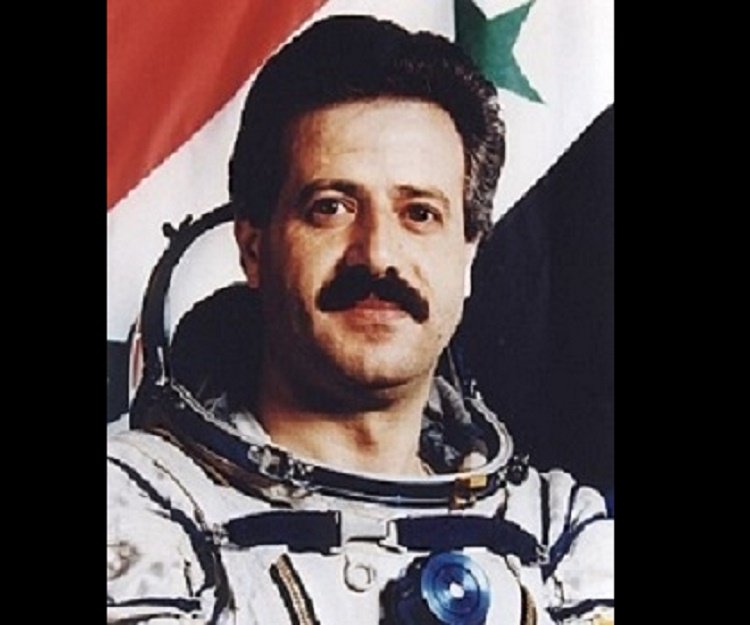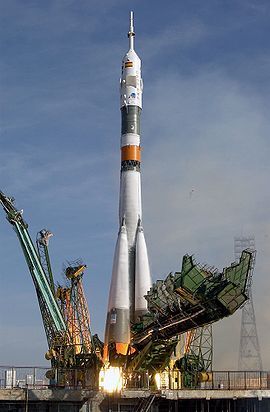Muhammed Faris
Syrian - (RFSA)
Retired
Date of Birth: May 26, 1951
Age: 74
Muhammed Ahmed Faris (Arabic: محمد أحمد فارس Muḥammad ʾAḥmad Fāris; born 26 May 1951) is a Syrian military aviator. He was the first Syrian and the second Arab in space.
Soyuz-U2 | Soyuz TM-2
Soviet Space Program | RussiaBaikonur Cosmodrome, Republic of Kazakhstan
Feb. 5, 1987, 9:38 p.m.
Status: Success
Mission:
Soyuz TM-2 was the first crewed flight of the new Soyuz TM spacecraft and the second long-duration mission to Mir space station. The mission began on February 5, 1987, 21:38:16 UTC, launching Commander Yuri Romanenko and Flight Engineer Aleksandr Laveykin into orbit. They docked with Mir two days later. During their stay there, new module was docked to the station. Crew was visited by several Progress resupply missions and by a crewed Soyuz TM-3 mission. The mission concluded with a safe landing back on Earth on December 29, 1987, 09:16:00 UTC.
Low Earth OrbitSoyuz-U2 | Soyuz TM-3
Soviet Space Program | RussiaBaikonur Cosmodrome, Republic of Kazakhstan
July 22, 1987, 1:59 a.m.
Status: Success
Mission:
Soyuz TM-3 was the third mission to Mir space station. The mission began on July 22, 1987, 01:59:17 UTC, launching Commander Alexander Viktorenko, Flight Engineer Aleksandr Aleksandrov and Research Cosmonaut Muhammed Faris, the first Syrian cosmonaut, into orbit. They docked with Mir two days later. During their stay there, crew conducted Earth observation, medical and other scientific experiments. The mission concluded with a safe landing back on Earth on July 30, 1987, 01:04:12 UTC.
Low Earth OrbitThe Roscosmos State Corporation for Space Activities, commonly known as Roscosmos, is the governmental body responsible for the space science program of the Russian Federation and general aerospace research. Soyuz has many launch locations the Russian sites are Baikonur, Plesetsk and Vostochny however Ariane also purchases the vehicle and launches it from French Guiana.
Electron
Symphony In The Stars
Rocket Lab Launch Complex 1B - Rocket Lab Launch Complex 1, Mahia Peninsula, New Zealand'Symphony In The Stars' is the first of two dedicated missions on Electron to deploy a single spacecraft to a 650km circular Earth orbit for a confid…
Falcon 9
Starlink Group 10-34
Space Launch Complex 40 - Cape Canaveral SFS, FL, USAA batch of 27 satellites for the Starlink mega-constellation - SpaceX's project for space-based Internet communication system.
Electron
Get The Hawk Outta Here (4x HawkEye 360)
Rocket Lab Launch Complex 1A - Rocket Lab Launch Complex 1, Mahia Peninsula, New ZealandHawkEye 360 is a a space-based civil global intelligence satellite network using radio frequency (RF) technology to help monitor transportation acros…
Falcon 9
Starlink Group 10-16
Space Launch Complex 40 - Cape Canaveral SFS, FL, USAA batch of 27 satellites for the Starlink mega-constellation - SpaceX's project for space-based Internet communication system.
Falcon 9
Axiom Space Mission 4
Launch Complex 39A - Kennedy Space Center, FL, USAThis is a Crew Dragon flight for a private company Axiom Space. The mission will carry a professionally trained commander alongside three private ast…



